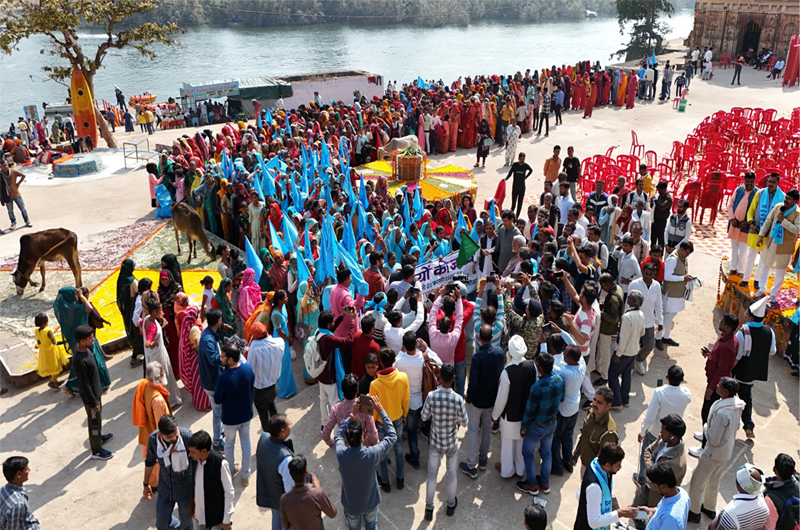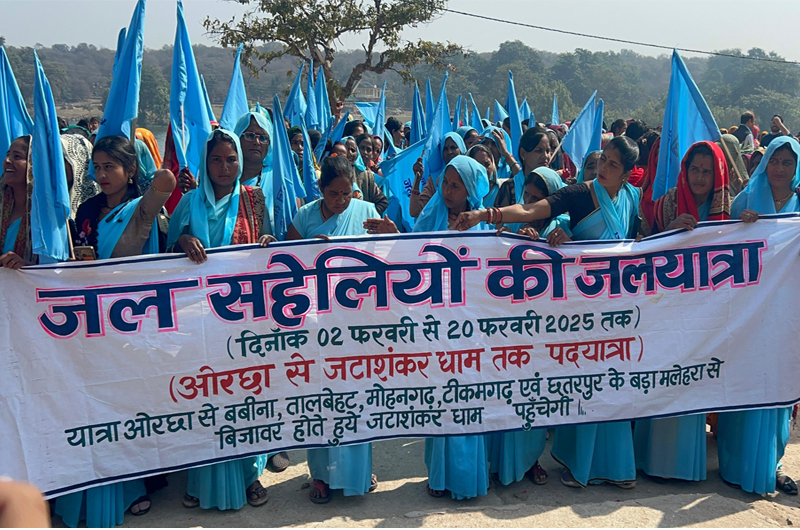It has been found that the restoration of several damaged and depleted water sources is one of the best ways of meeting the water needs of the Bundelkhand Region. A committed band of jal sahelis have taken time out from their hard lives to inspire people in this water-challenged area to conserve and improve existing resources. Bharat Dogra has the details
Bundelkhand Region in Central India, comprising 14 districts of Uttar Pradesh and Madhya Pradesh, has often been in the news due to water scarcity, but at the same time it should be emphasised that this region has important assets and strengths which, if tapped properly, can end the scarcity. However, the solutions must be based on several specific features of the region and a lot can be learnt from traditional wisdom of conserving and collecting water, particularly in tanks. A significant number of such tanks go back about a thousand years to the times of the Chandela kings.
It has been found that the restoration of several of these damaged and depleted water sources is one of the best ways of meeting the water needs of the Bundelkhand Region. Another good option is to revive and rejuvenate several small rivers which used to be the lifeline for many remote villages but have been harmed to the extent of almost vanishing due to over-exploitation, excessive sand-mining, encroachment and other factors.
Parmarth is a leading voluntary organisation working in the region in cooperation with the government and local communities to improve water conservation in about 100 villages. It has helped renovate about 100 tanks and six small rivers. An important plank of the work has been the mobilisation of women water volunteers, called jal sahelis, recognisable by their sky-blue outfits, who have been involved in river rejuvenation and tank restoration, apart from improving water supply and sanitation.

Now, the jal sahelis recently got together to take out a yatra or march from Orchha to Jaishankar Dhaam, covering about 300 km across five districts – Niwari, Tikamgarh and Chhatarpur in Madhya Pradesh, and Jhansi and Lalitpur in Uttar Pradesh. At various places along the route, jal chaupals or dialogues on water are organised to discuss aspects of water conservation. The jal sahelis talk about their work and learn about local initiatives. In the process, information about the local water sources is collected along with suggestions regarding the improvement efforts needed. What is more, whenever time permits, some shramdan or contribution of voluntary work is also done, to clean or improve the water sources.
All this has attracted a lot of attention and support from villages which are on the path of the march or close by. The marches can be a very good way of taking the message of water conservation to remote villages and also of spreading information regarding some of the remarkably successful efforts of villagers and particularly village women in the recent past. They can inspire other people to take similar efforts. It is remarkable that the women not only contributed voluntary work earlier but have also taken time and energy from their many farm and family responsibilities, for a wider social cause. Such efforts should be widely encouraged.
(The writer is a senior freelance journalist and author who has been associated with several social movements and initiatives. He lives in New Delhi.)



 from Webdoux
from Webdoux